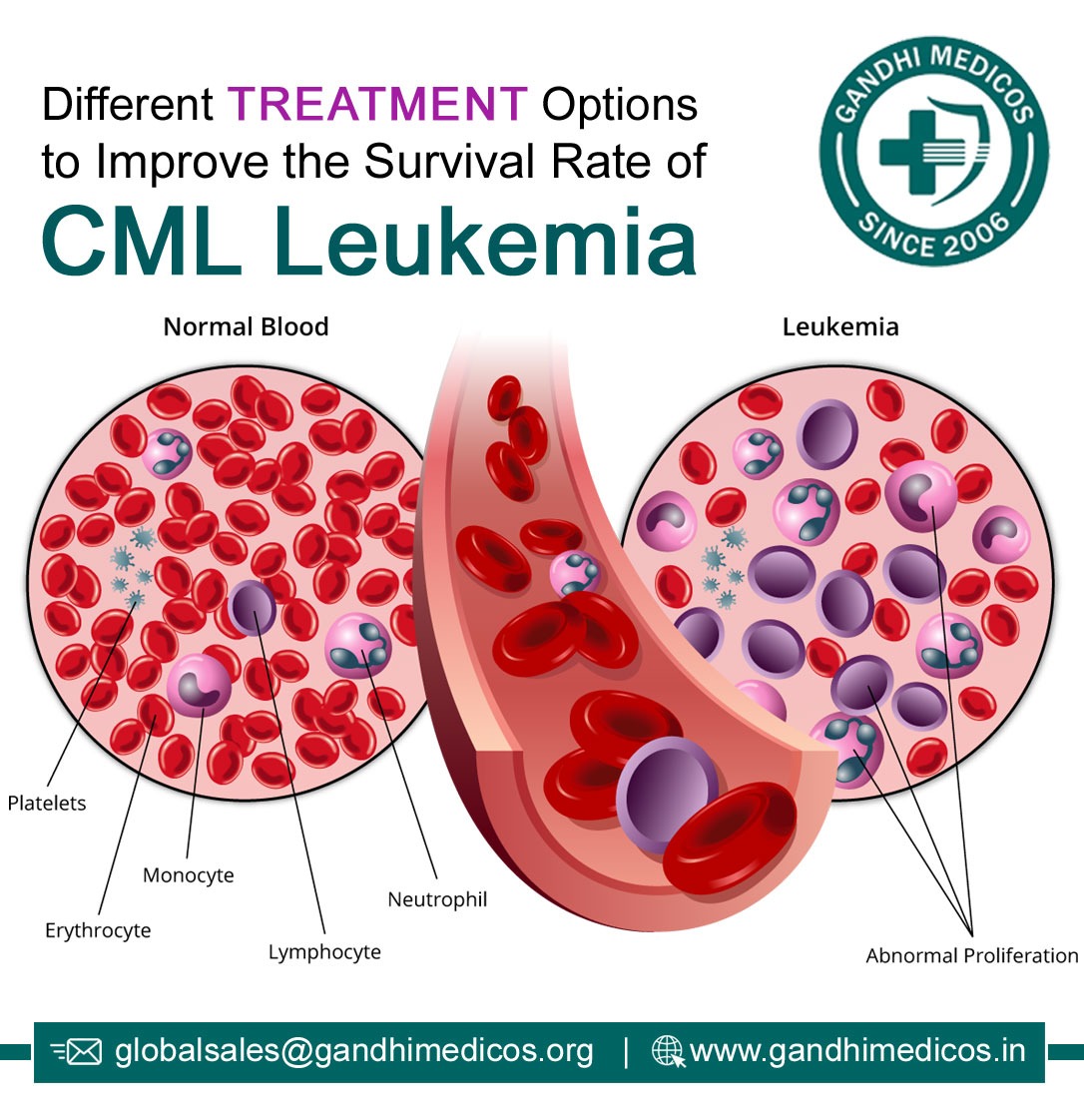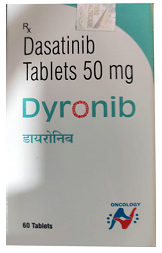Introduction of CML Leukemia
Leukemia is a type of blood cancer affecting white blood cells. The survival rate of CML leukemia can be improved if the treatment is started in time. To increase the survival rate of leukemia patients, the diagnosis should be made as early as possible.
Different treatment options include:
- Chemotherapy and radiation therapy are used to treat cancer cells in the bone marrow, blood, liver, and other parts of the body.
- Chemotherapy drugs are given intravenously (by vein) or into muscle tissue.
- Radiation therapy is given to destroy cancer cells through high doses of radiation energy that damage DNA structures called chromosomes (the genetic material).
- Treatment for CML leukemia starts with a targeted therapy known as a tyrosine kinase inhibitor (TKI). This type of therapy has increased the life expectancy of patients to an average of up to 30 years. TKI drugs such as Dasatinib tablets 50mg and Dyronib 50mg Tablets are prescribed.
- The tablets, such as Dyronib 50mg Tablet, use the process to suppress the BCR-ABL tyrosine kinase enzyme that causes CML leukemia.
- Patients also undergo other treatments, such as chemotherapy and radiation therapy, which may be needed if there is no remission after 6 months or more from taking the first TKIs.
- If patients respond well to the TKI therapy, they are taken off this treatment after a few years if their blood cell counts remain normal. However, if there are signs of leukemia cells in the body, treatment will be continued until blood cell counts remain normal and stay normal for some time after treatment is stopped.
- If blood cell counts remain normal, treatment is stopped, but if they do not, then treatment is continued. Blood cell counts are checked regularly during this period.
- For patients who develop resistance to TKI drugs, Imatinib is prescribed for them. This type of therapy is known as second-generation TKIs and can prevent or delay complications from occurring. Imatinib is a drug that was originally discovered in the laboratory by scientists at Bristol-Myers Squibb (BMS), which manufactures the drug under contract with Roche Laboratories. It treats chronic myelogenous leukemia (CML) in adults and children with Philadelphia chromosome-positive disease (Ph+). The FDA approved this medication on December 20th, 2002; however, it wasn’t until April 2005 that doctors began prescribing it widely because there were still concerns about its safety profile compared to other available treatments such as Gleevec/Imatinib mesylate tablets and Dasatinib tablets 50mg.
With early diagnosis and proper treatment, survival rates can be improved in the case of CML leukemia.
The survival rate of CML leukemia can be improved with early diagnosis and proper treatment. Early diagnosis is important because the earlier you are diagnosed, the better your prognosis.
The best way to treat CML leukemia is through chemotherapy. Chemotherapy involves taking medicine that kills cancer cells while leaving healthy cells alone. Chemotherapy drugs work by damaging DNA or RNA molecules inside a cell’s nucleus (the part of a cell where genetic instructions are stored). This damage causes cancer cells to die because they’re no longer able to grow properly or reproduce fully; however, healthy cells do not die when exposed to chemo treatments because they have different DNA sequences than normal ones do (and therefore don’t become damaged).
Conclusion
Leukemia is often treated at the advanced stages of the disease. However, in the case of early diagnosis and proper treatment, survival rates can be improved. Early detection can help identify patients who might respond well to tyrosine kinase inhibitor therapies like Dasatinib tablets 50mg and Dyronib 50mg Tablet, increasing their life expectancy to an average of up to 30 years.


 Anti Cancer Drugs
Anti Cancer Drugs Hepatitis C
Hepatitis C Meds for HIV
Meds for HIV Ayurvedic Medicine
Ayurvedic Medicine Transplant Medicine
Transplant Medicine Respiratory System
Respiratory System +91-9811604444/ 9811604424/ 9999064250
+91-9811604444/ 9811604424/ 9999064250  8(800)100-47-90
8(800)100-47-90
